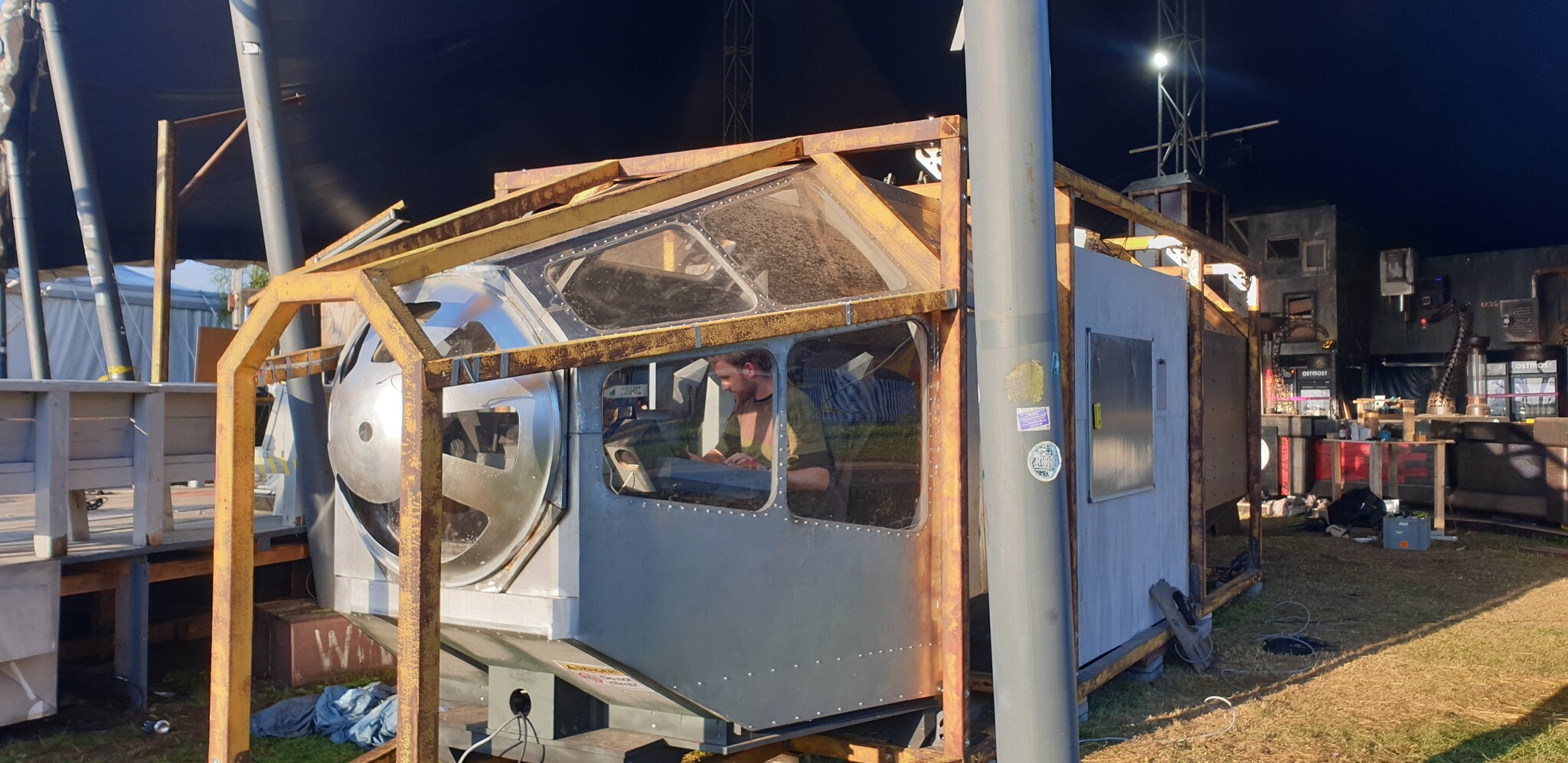The story
The Palapians are a community that live on a planet far away, in their cyber-punk dreamscape. However all their progress led to deep trouble: like we are about to, they destroyed their planet, leading to drastic climate changes. And because of that, their old fear has returned, the dragons that roamed their world centuries ago. Being masters in technology, the Palapians quickly built a spaceship to escape their hellish world - however this also leads to a vast split in their society: many want to escape their planet to start anew somewhere else - but there is also a faction that still believes that their planet as a chance to be saved, but for that, their colony ship must be destroyed first.
The game
The spaceship itself is basically a high-tech, fully automated escape game with a few twists. Inside it, festival visitors face 7 missions - and a choice:
- Launch path: fulfill 4 missions to repair all systems and start the ship.
- Sabotage path: if 5 missions get sabotaged, the Palapians never leave.
It’s social and a bit deceptive: many tasks require multiple people, so a hidden defector can quietly ruin your run. As missions succeed, the ship improves (perks like switching the cockpit font from Palapian glyphs to plain Latin). As sabotage piles up, the ship degrades - glitching screens, alarms, flashes - until it’s beyond repair, leaving only the choice to leave the ship and stay on-planet. Hit enough successes, however and the whole ship rumbles to life: launch.

The tech
The build is fully modular and designed for festival throughput. Unlike a classic escape room, it auto-resets: missions time out after a few minutes, return to rotating start/goal states, and untreated paths drift toward “sabotaged” by default.
- Stack: Python orchestration; multiple ESP32 nodes for I/O (programmed in C); front screens in Unity.
- Hardware: 15+ LED strips, rumbling seats, atmospheric audio, and a lit exhaust with fog effects, secret hatches that can be opened, and much more
- Network & protocols: everything on Ethernet; OSC for real-time control (plus Art-Net and REST APIs where appropriate).
- Resilience: all devices send heartbeats so the admin UI knows what’s alive; if a node drops, its mission is cancelled or re-routed.
- Game loop: a central handler tracks progress and timers and drives the Unity cockpit via OSC.
A few modules
- Comms Testing: (Cosmic Cable Connection) answer the “right” phone call to sync comms.
- Target Practice: use the joystick to clear incoming meteorites
- Biomass Link: get enough people to form the correct human-plate connections.
- Keypad: discover and enter the launch code - no typos.
- Ship Wiring: patch panels to tame the ship’s runaway electricity.
That’s the core: a plug-and-play, festival-proof spaceship that lets strangers cooperate (or betray) through real hardware, tight timing, and a story that actually reacts to what they do.
The Code
- Python: https://github.com/cstenkamp/Palapa_Spaceship_Pythoncode
- Unity: https://github.com/cstenkamp/Palapa_Spaceship_UnityDisplayCode
- ESPs: https://github.com/cstenkamp/Palapa_Spaceship_ESPCodes





